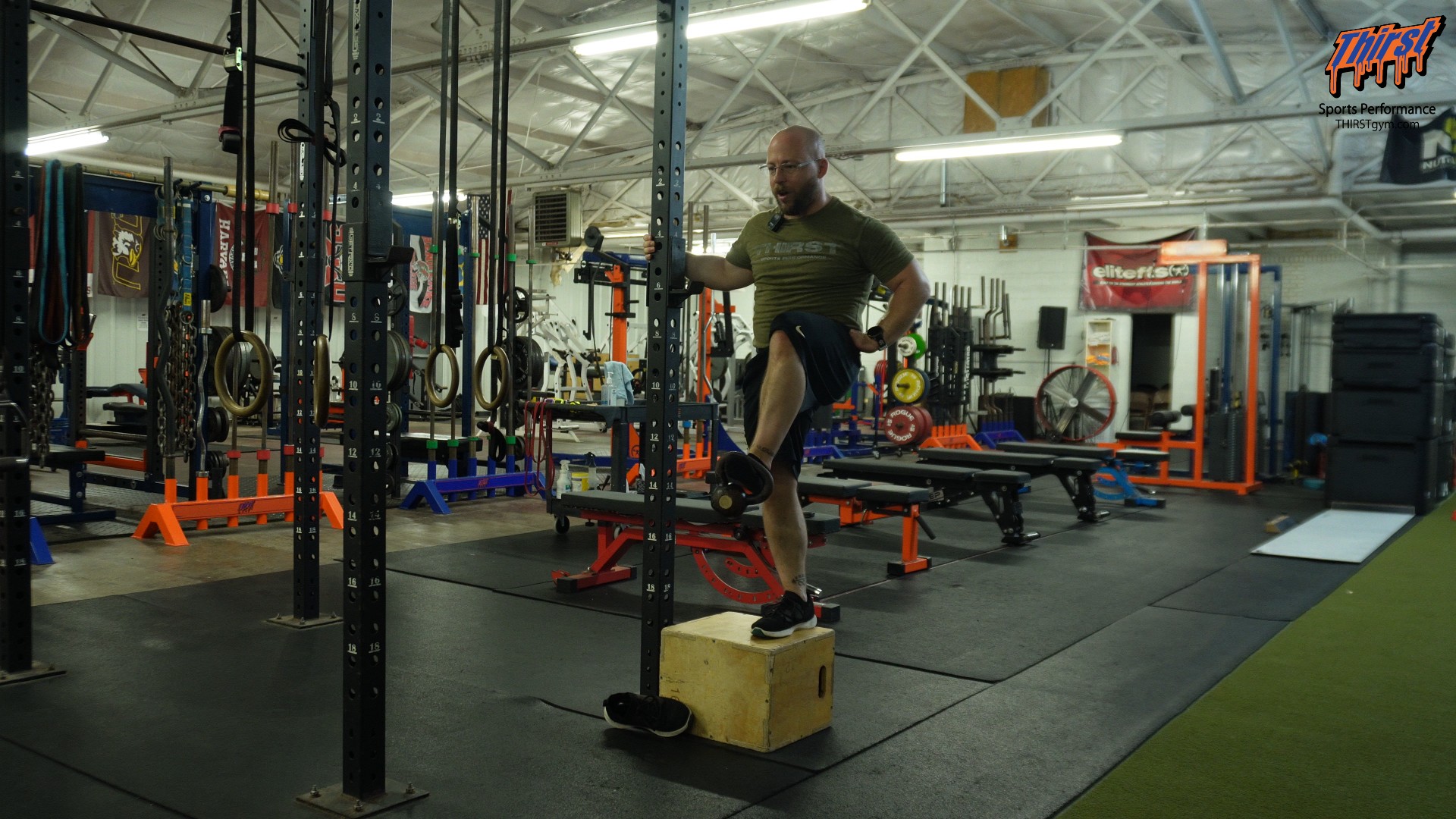Standing Single Leg Kettlebell Hip Flexor Raise: The Ultimate Exercise for Runners and Athletes
When it comes to developing powerful hip flexors and improving athletic performance, few exercises deliver the comprehensive benefits of the standing single leg kettlebell hip flexor raise off box. This innovative movement combines strength training, functional patterns, and therapeutic benefits into one highly effective exercise that deserves a place in every athlete’s training arsenal.
Watch the video below on how to maximize this exercise.
Understanding Hip Flexor Function and Importance
Hip flexors are among the most critical muscle groups for athletic performance, yet they’re often overlooked in traditional training programs. These muscles, including the iliopsoas, rectus femoris, and tensor fasciae latae, are responsible for lifting your thigh toward your abdomen during running, jumping, and virtually every athletic movement. When hip flexors are weak or tight, the entire kinetic chain suffers, leading to compensatory movement patterns that can result in injury and decreased performance.
The standing single leg kettlebell hip flexor raise addresses these issues by training the hip flexors in a functional, weight-bearing position that closely mimics the demands of running and sports. Unlike traditional hip flexor exercises performed lying down, this movement challenges your stability, coordination, and strength simultaneously.
Equipment Setup and Exercise Preparation
Before diving into the movement itself, proper setup is crucial for both safety and effectiveness. You’ll need three key pieces of equipment: a sturdy box measuring 12 to 16 inches in height, a kettlebell (starting with 10-15 pounds is typically sufficient), and optionally, a wall or rack for support during the learning phase.
The beauty of this exercise lies in its simplicity and scalability. The box height can be adjusted based on your mobility and comfort level, while the kettlebell weight can be progressed as your strength improves. Many practitioners find that removing their shoes makes it easier to secure their foot properly in the kettlebell’s horns, though this isn’t strictly necessary.
Step-by-Step Exercise Execution
Begin by positioning yourself beside your support structure if you’re using one. Place your supporting foot firmly on the box, ensuring your entire foot makes contact for maximum stability. Your supporting hand should grip the wall or rack, while your working leg extends down to thread through the kettlebell’s handles.
The key technical point here is maintaining a dorsiflexed foot position throughout the movement. This means keeping your toes pulled up toward your shin, which not only ensures proper muscle activation but also helps secure your foot within the kettlebell. The weight of the kettlebell should create a gentle downward pull, providing beneficial traction to the hip joint.
From this starting position, drive your knee upward into hip flexion, imagining you’re bringing your thigh as close to your chest as possible. The movement should be controlled and deliberate, focusing on the quality of the muscle contraction rather than speed. Maintain proper posture throughout, keeping your torso upright and avoiding any lateral leaning or twisting movements.
Return to the starting position with the same control, allowing the kettlebell to gently stretch the hip flexors at the bottom of the movement before initiating the next repetition. This eccentric component is particularly valuable for improving flexibility while building strength through a full range of motion.
Performance Benefits and Applications
The standing single leg kettlebell hip flexor raise offers multiple performance benefits that extend far beyond simple hip flexor strengthening. The unilateral nature of the exercise addresses muscle imbalances between legs, while the standing position challenges your core stability and proprioception. This combination makes it an excellent choice for runners seeking to improve their stride mechanics and power output.
The offset loading created by the kettlebell also provides significant abdominal strengthening, particularly through the deep stabilizing muscles. While holding onto a support reduces some of this challenge, it allows beginners to focus on proper hip flexor activation before progressing to unsupported variations.
For runners specifically, this exercise trains the hip flexors in a pattern that directly transfers to running mechanics. The ability to drive the knee up forcefully and quickly is essential for maintaining stride frequency and power, especially during sprinting or hill running. Regular practice of this movement can lead to noticeable improvements in running efficiency and speed.
Therapeutic Applications for Low Back Pain
Beyond athletic performance, this exercise serves as an excellent therapeutic tool for individuals dealing with low back pain. Weak hip flexors often contribute to compensatory movement patterns that place excessive stress on the lumbar spine. By strengthening these muscles while simultaneously improving their flexibility, this exercise helps restore normal movement patterns and reduce pain.
The traction component provided by the kettlebell’s weight offers gentle decompression of the hip joint, which can be particularly beneficial for those with hip impingement or stiffness. This makes the exercise suitable not only for high-level athletes but also for recreational exercisers and rehabilitation patients.
Programming and Integration
For optimal results, incorporate this exercise into your routine 2-3 times per week, performing 2-3 sets of 10-15 repetitions per leg. The exercise works exceptionally well as part of a dynamic warm-up routine, particularly before lower body training sessions or running workouts. The movement helps activate the hip flexors and core muscles while improving joint mobility.
You can also use this exercise as “filler” between other exercises during strength training sessions, or as a supplement to plyometric training. The post-activation potentiation effect from the weighted resistance can actually enhance subsequent explosive movements, making it an excellent primer for sprints or jumping exercises.
The standing single leg kettlebell hip flexor raise represents a perfect fusion of strength, mobility, and functional training principles. Its versatility makes it suitable for athletes across all sports while offering therapeutic benefits for those dealing with hip and low back issues. Master this movement, and you’ll unlock a powerful tool for improving athletic performance and movement quality.








